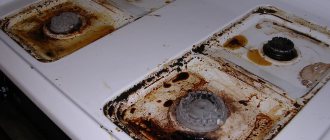Views: 1,509
Sewer moth fly
Sometimes in the house you can observe the appearance of small flies that look like small butterflies. They grow in places where there is high humidity . Most often this is a bathroom, toilet, kitchen. In apartment buildings and private buildings, they can also be found in basements and other similar poorly ventilated places where excess moisture accumulates. These are butterflies, or sewer flies .
These insects do not pose a direct threat to human health and life . However, their appearance is still annoying. With strong reproduction, butterflies form a whole swarm. They fill the living space, clinging to the ceiling and walls above their habitat. What kind of insects are these, why they appear in the house and how to get rid of the butterfly , we will tell you in this article.
What kind of fly is the sewer butterfly?
Butterflies are the closest relatives of mosquitoes - small dipterous blood-sucking insects. However, unlike them, butterflies do not feed on blood. They are herbivores . They prefer rotting plant remains, accumulations of bacteria and microscopic fungi. From this point of view, they are much less harmful than their carnivorous relatives, who are capable of transmitting pathogens of serious diseases. Therefore, as a rule, they are not classified as dangerous insect species .
Butterfly photo from the side
However, they are still annoying. What do these winged arthropods look like? Outwardly they are very attractive. Miniature, up to 4 mm in size, tiny “butterflies” . They have characteristic oval wings that are large for their size. Body color is dark, grayish-brown. Sometimes graphite black.
The entire body of butterflies is heavily hairy , which increases their resemblance to moths. The legs are thick and short. On the head there are long, clearly visible, feathery antennae. In general, unlike many other insects, they do not look repulsive. Quite cute midges.
Description and photo
The pest has a special predilection for plants belonging to the cruciferous family. The victims of the voracious insect include cabbage, radishes, spinach, turnips, lettuce and other vegetables. The flea beetle does not disdain some flower crops; alyssum and matthiola may well become objects of attack.
In nature, the bug feeds on wild plants such as shepherd's purse or wild mustard.
The insect is easy to distinguish from other pests. It is capable of jumping long distances. It is for this quality that they call it a flea. In fact, the beetle has nothing to do with the flea family.
It comes in black, green or blue. There are striped individuals among them - it all depends on the habitat of the insect. It is quite small, its length is no more than 3 mm.
The pest overwinters under the remains of unharvested vegetation, under the top layer of soil.
As soon as spring comes, flea beetles become active and begin to eat the first weeds. After some time, horseradish and radish sprouts appear.
Small pests happily move onto these crops. But beetles are especially delighted with cabbage seedlings. During the period of setting a head of cabbage, insects attack the vegetable.
Adult beetles feed on the top, juicy layer on cabbage leaves. They seem to scrape off the pulp, leaving solid holes in the damaged areas. Pests are capable of chewing through entire passages in a head of cabbage.
Cruciferous flea beetles reproduce in hot weather. For a comfortable existence, the air temperature must be at least 15 degrees.
At this time, females lay eggs in the upper layers of the earth. After some time, larvae emerge from the eggs. They feed on young plant roots. The larvae develop within two weeks, then pupate. This stage in the development of insects occurs in early August.
The young shift crawls out of the upper layers of the soil and attacks the plantings with redoubled force. With the onset of autumn, cruciferous flea beetles settle down for the winter.
In rainy weather, the vigorous activity of pests subsides and active reproduction does not occur.
Types and their features
In the central and western parts of Russia, the wavy flea beetle operates. It is black in color, and yellow stripes can be seen above the wings.
In Yakutia and Primorye you can find notched cruciferous flea beetles. They not only gnaw out the top layer of the plant, but also completely skeletonize the leaves.
The light-legged flea beetle lives in forests in the southern regions of Russia. This black bug boasts yellow legs.
The most aggressive representative of the glorious family is the southern cruciferous flea beetle. She has a black body with a metallic sheen. The head is dotted with rough spots.
If the number of pests is growing exponentially every day, serious measures need to be taken. Chemicals will come to the rescue.
Where do sewer flies live?
Butterflies that appear in human homes are synanthropic insect species. This means that the most favorable conditions for their life are created next to people. Basically, two conditions are important for sewer moths - humidity and organic debris on which they feed. Reduced illumination up to complete darkness (as in basements) and cool air are welcome. That is why the massive and active appearance of these insects can be observed, as a rule, in the off-season .
Butterflies in apartments breed most often in drains or in clogged places with constant humidity . Therefore, their appearance often indicates a violation of sanitary and hygienic standards in the home. This is what you need to pay attention to first in case of their invasion.
Advantages and disadvantages of traditional methods
It is recommended to fight cabbage in your summer cottage using folk remedies using cabbage and other plants. To make effective preparations, plants, flower decoctions, spices, substances with a pungent odor, wood ash and much more are used.
The main advantage of the methods is safety for the environment and people. Especially when it comes to early varieties of cabbage. The decay period of the insecticidal substance is from 22 to 60 days. If poison enters the body along with a vegetable, it threatens the accumulation of toxins. It is impossible to feel the effect of the poison immediately, but with the same tactics of treating cabbage with poison, the risk of developing stomach ulcers and cancer increases several times.
The remedy for white cabbage is prepared from “available” ingredients that are always present in the household, medicine cabinet, and kitchen. The process is simple and does not take much time. There is no need to use personal protective equipment in the form of a respirator or suit. It is enough just to protect your hands with rubber gloves.
A significant drawback is that throughout the warm season you will have to repeat the cabbage treatment several times to achieve the desired result. To save cabbage from cabbage worms that have already appeared, spray the vegetable 2-3 times a week, depending on the product chosen. If you need to protect cabbage, once every 14 days is enough.
How do butterflies develop?
Adult insects may not feed. However, the larvae need decaying remains of plant organic matter . They can be found in abundance in sewers and other similar places. There, the adult insects lay their eggs, which hatch into tiny larvae after a couple of days . Within a week, the worm-like larva turns into a miniature fly. After another two weeks, the insect reaches an adult state in which it is capable of producing its own offspring.
Thus, in just over three weeks, sewer flies go through the entire development cycle and turn from eggs into sexually mature individuals. At the same time, butterflies are quite prolific. One clutch of eggs can contain up to 100 young . Of course, not all of them survive to adulthood. However, those who do survive are enough to quickly increase their population if this is not resisted.
Adult butterflies are usually quite lazy . They don't fly much. And if they do fly, it is for very short distances. They mostly sit on walls near their breeding sites.
Varieties of house flies
Various types of midges can settle in human housing:
- small flies are very biting insects;
- fruit flies - they are called fruit flies;
- sewer midge;
- plant midge - flower gnats;
- clothing moth.
All these types of midges differ from each other both in appearance and in their “tasty” diet, population reproduction rate, and habitats.
Small flies and fruit flies feed on garbage food waste, sewer midges feed on sewage that accumulates in sewer drains, plant midges prefer to feed on plants, and clothing moths feed on natural fabrics, fur and woolen items.
How to get rid of a butterfly?
Butterflies in the bathroom or kitchen are the first sign of clogged drains. Therefore , the first thing to do in this case is to clean the pipes . It doesn’t matter how – mechanically using a plunger or using chemicals. Both methods allow you to remove butterfly larvae from their habitats.
Adult insects can be easily gotten rid of with any insecticidal aerosol or simply by killing them mechanically. Both highly toxic products such as dichlorvos and specially designed aerosols against mosquitoes and other flying insects (Mosquitol, Raptor and others) are suitable as a spray. It is quite appropriate here to use plates and fumigators, as well as mosquito coils .
In any case, it is important not to be indoors at this time . Especially when using highly toxic drugs. Upon returning home, the space should be well ventilated. When using fumigators to destroy butterflies, it is not necessary to leave your home. However, windows must be open for adequate air circulation and ventilation.
All this is true both for residential premises and for basements or outbuildings. Such measures may be enough to get rid of butterflies. However, if the infestation of insects is very strong or you do not want to deal with their removal yourself, then contact our disinfection service “Nymphadez” . We will quickly resolve this problem.
We exterminate flies in the bathroom using sprays and poisons
In cases of particularly active drainage flies, the following remedies will be useful to you. They perfectly complement traditional wrestling methods and professional chemistry. Such insect development limiters, aerosols and poisons can be perfectly combined with other existing developments. What else do insecticide manufacturers offer us?
Aerosol Raid
This insect activity regulator, like similar products, is a universal chemical. They can be used against ants, beetles, midges... if these creatures settle in some secluded places. The main feature of limiting aerosols like Gentrol Aerosol Insect Growth Regulator is their ability to penetrate the trickiest insect dens! A familiar picture: hundreds of ants crawl out of a small crack on the wall... Or small bugs begin to crawl out from under the floorboard at night! Just spray this “entrance” and the job will be done. The complex chemical formula literally “sterilizes insects.” Adults will not die, but will spread the “poison” throughout their nest and significantly slow down reproduction. A similar principle applies to drainage flies.
It dissipates into a light foam that fills the space like a building sealant. However, then you can easily wash it off and use the drain for your pleasure.
User Joe thanks the product for the complete elimination of flies and its long shelf life. And Kristine calls it the best “seasonal remedy” for insects. And all existing complaints relate to the fight against other insects: for example, water beetles, which many confuse with cockroaches. It turns out that the spray fights effectively against our patients.
Price: 169 rub.
Aerosol Raptor
Before us is a kind of mix between an aerosol and a drain gel. This liquid also uses natural microorganisms that destroy signs of decomposition, harmful bacteria, odors and insect larvae. True, it is used more often for “external use”. After all, the main function of this mixture is the destruction of harmful odors. Yes, yes, the developers managed to combine a cosmetic effect, pest control and prevention.
The spray can be used on walls, floors, carpets and wall voids, basements and trash containers. And also garbage cans, bathrooms, compost heaps and technical drains. They gave it a whirl, the mixture covered the “territory of war” in an even layer and began to do its job. Users claim that if the instructions are followed correctly, it can kill flies. Yes, the destruction efficiency is not as high as that of concentrated gels, but what versatility!
In general, this substance cannot be recommended as the main tool in the fight against “winged girlfriends”. But to maintain healthy home hygiene, especially when living outside the city, this thing will definitely come in handy.
Price: 248 rub.
Prevention measures
In the case of the fight against sewer moths, preventive measures play an important role. Getting rid of a butterfly is not that difficult. It is much more difficult to prevent its re-settlement and reproduction . And to do this, it is necessary to eliminate the causes that contribute to its appearance and create favorable conditions for the life of these insects.
What do we have to do:
. Both mechanical and chemical methods are suitable.
Clean drains regularly and promptly- Do not allow water to stagnate and dampness to form on any surfaces . Immediately remove excess moisture.
- Fix water leaks and plumbing problems in a timely manner.
- Install fine-mesh mesh on the ventilation openings to prevent butterflies from entering from basements, neighbors, etc. It is recommended to do this to protect not only from butterflies. Such measures greatly help to avoid the invasion of cockroaches, bedbugs, fleas, mosquitoes and other unpleasant insects traveling through ventilation.
- Cracks in walls and floors must be repaired . Again, this helps create difficult conditions for survival not only for butterflies, but also for many other much more dangerous parasites.
- It is important that the room is sufficiently heated, ventilated and dried . At all costs, you should avoid high humidity in places where moisture can accumulate.
- Maintain cleanliness and order in the house , eliminating with cleaning agents possible accumulations of plant organic matter in hard-to-reach areas, especially those exposed to water.
On the one hand, they are another unpleasant side effect of high humidity and a signal that proper control measures need to be taken. On the other hand, sewer moths can also feed on this mold. Therefore, in any case, you need to get rid of mold. And as quickly as possible.
Get rid of mold and mildew.
Following these simple rules will allow you to permanently get rid of the butterfly in the house and prevent its reappearance.
Other articles on the topic:
– How to protect yourself from mold: causes and habitats
– Elimination of odors with dry fog
– Mold removal: do it yourself or turn to professionals?
– What is disinfestation? Types of disinfestation.
Folk remedies
To control pests, you can use mixtures of the following substances:
- Superphosphate and potassium chloride;
- Wood ash, tobacco powder, lime;
- Wood ash and liquid soap.
- Kerosene and laundry soap.
Ordinary potassium permanganate will help get rid of the cutworm - you need to spray the plants with a weak solution.
Cutworms cannot tolerate the smell of cilantro and basil - if you plant these plants on your site, insects will fly around it.
Popular folk remedies for getting rid of cutworms also include various traps and repellents.
Spread eggshells between the beds or hang them on the plants - these actions will repel cutworm butterflies.
For bait you can use sweet syrups, jam, honey, beer. Place the mixture in small jars and place traps around the area. Remember to remove cutworms caught in the traps daily and change the mixture periodically.
Install bird feeders in the garden, thereby attracting them to your site. Many birds love to feed on cutworm larvae and caterpillars and will help you reduce pest infestations.
Lifestyle and reproduction
The odorous krasotel benefits people. An entomophagous predator helps control the number of dangerous tree pests:
- leaf roller;
- Volyanka;
- ringed and gypsy moths.
Beetles attack larvae and butterflies. The beauty runs and flies quickly. It hunts in the upper tier and descends to the ground to eat prey. Peak activity of adults occurs in the afternoon and evening. Larvae hunt at any time. Young beauties do not eat their prey entirely, but inflict fatal wounds on it. Adult beetles find caterpillars and moths by moving along tree trunks and branches. Having caught an insect, they try to find a convenient area for eating. The hunter does not always have enough strength to pull down a large hairy caterpillar; in this case, he feeds on a wide branch. Krasotel treats the victim's body with special softening enzymes. The beetle larvae have adapted to destroy the silkworm's web nests. Over the summer, they rid the forest of 60 caterpillars and 20 pupae. Adult beetles are more efficient; they have about 300 caterpillars.
Reproduction
Mating occurs in the spring. The female lays from 100 to 600 eggs in the soil. The ability to reproduce depends on the amount of food. Females need large amounts of protein. As the population of pest caterpillars increases, the number of beetles also increases. 1-2 weeks after laying, small larvae appear. They do not immediately leave the egg cradle, but wait for the appearance of a hard black cover. The offspring actively feeds and grows, molting and changing ages. In mid-July they burrow 25 cm into the soil and pupate. By August, young adults appear. The beetles do not leave the cocoons, remaining in them for the winter.
One generation of beauty beetles changes per year. The lifespan of insects is 2-4 years. Adult beetles hide in the forest floor for the winter. The following year they appear along with the young in May-June.
Legal protection of wildlife
The protection and rational use of wild animals are determined by the Constitution of the Russian Federation, federal laws, regulations and other legislative acts. The most significant of them are considered to be the laws of the Russian Federation “On the Protection of the Natural Environment” (1992) and “On the Animal World” (1995). According to the latest law, “the animal world is the property of the peoples of the Russian Federation, an integral element of the natural environment and biological diversity of the Earth, a renewable natural resource, an important regulating and stabilizing component of the biosphere, fully protected and rationally used to meet the spiritual and material needs of citizens of the Russian Federation.”
This law provides for the procedure for the use of game animals, monitoring of wild animal populations, measures for the protection and restoration of rare and endangered species.
The legal norms of fisheries in Russia are determined by the Regulations on the protection of fish stocks and on the regulation of fish farming in water bodies of the USSR, approved by the Council of Ministers of the USSR in 1958, and the “Fishing Rules” published for each republic and basin. They prohibit the extraction of fish using explosives, firearms, toxic substances, prisons, nets, and fishing near dams and locks. The rules determine the timing and areas of commercial fishing, and the size of the meshes in the nets.
In the system of measures for the protection of animals, one of the central places is given to maintaining the Red Book of the Russian Federation and the Red Books of the constituent entities of the Russian Federation as the most important element contributing to the conservation of biodiversity.
In accordance with the Decree of the Government of the Russian Federation “On the Red Book of the Russian Federation” (1996), it is maintained by the State Committee of the Russian Federation for Environmental Protection (included in the Ministry of Natural Resources since the summer of 2000) with the participation of federal bodies of the natural resource block and the Russian Academy of Sciences. The procedure for maintaining it is regulated by the Regulations on the procedure for maintaining the Red Book of the Russian Federation, approved by the State Committee for Ecology of Russia (October 1997) and registered by the Ministry of Justice of Russia (December 1997).
As of November 1, 1997, the Red Book of the Russian Federation included 415 species of animals (of which 155 species are invertebrates, 4 are cyclostomes, 39 are fish, 8 are amphibians, 21 are reptiles, 123 are birds and 65 are mammals). Compared to the previous Red Book of Russia (1983), the number of animal species has increased by 1.6 times. At the same time, 38 species of animals were excluded from the new Red Data Book of the Russian Federation, the state of whose populations, thanks to the protection measures taken, currently does not cause concern.
At the end of 1997, red books were created in 18 subjects of the Russian Federation, and lists of rare and endangered species of animals and plants were compiled and approved in 39 subjects of the Federation.
Control questions
1. What role do animals play in the cycle of substances in nature and what significance do they have for humans?
2. What is the direct and indirect impact of humans on animals?
3. What species of animals have become extinct over historically documented time and what are the reasons for their extinction?
4. What is the essence of the rational use and protection of game animals?
5. What is the rational use and protection of fish resources?
6. Name the rare species of animals listed in the IUCN Red Book.
7. How are rare and endangered animals protected in our country? How are aquatic invertebrates protected?
8. What measures are used to protect beneficial insects?
9. What is the difficulty of protecting amphibians and reptiles?
10. How are insectivorous and birds of prey protected and attracted?
11. What measures are taken to protect rare and endangered mammals?
Effective folk remedies
How to fight caterpillars on cabbage according to folk recipes, everyone chooses individually for themselves. To increase efficiency, it is recommended to combine several methods at once.
Wood ash
One of the most effective folk remedies against many garden and garden pests. There are several ways to get rid of caterpillars on cabbage.
- A solution of ash and laundry soap will help against cabbage butterfly larvae. A foaming ingredient of natural origin is added to increase the effectiveness of wood ash - it holds particles on the surface of the sheet. Add the ingredients to the water, mix, and pour into a garden spray bottle or spray bottle. Spray cabbage leaves thoroughly from all sides. The procedure should be carried out early in the morning or in the evening. Repeat after 3 days, provided there is no rain.
- Ash is added to the water and watered over the cabbage. The active components penetrate into the plant juice in this way, giving it bitterness. The caterpillars stop feeding, crawl to neighboring areas, or die.
- In the garden bed around the cabbage there are paths made of wood ash. It is recommended to do this procedure even before the butterflies begin to flutter over the plant.
The harm to the cabbage butterfly can be colossal - from the destruction of seedlings to damage to ready-made, formed heads of cabbage.
Plants with a strong smell
The fight against cabbage with folk remedies is not complete without plants. Their goal is to scare away moths, prevent them from laying eggs, and also “spoil the appetite” of the caterpillars.
- Plant calendula, marigolds, onions, and garlic around the bed or between the rows. The persistent smell repels butterflies, so you don’t have to fight caterpillars.
- An infusion is prepared from tobacco, garlic, wormwood, tansy, and celandine. The ingredients can be mixed together or taken separately. Fill with water and let sit for a day. Strain and add laundry soap. Used for spraying. The procedure is repeated every 3 days.
- Effective against cabbage butterflies and caterpillars, valerian, essential oil of lavender, citrus fruits, citronella. Add an aromatic substance to the water - 10 drops per 1 liter. Spray the cabbage.
At the height of summer, cabbage butterflies live on strawberries and actively feed on nectar. They live for about 20 days. During this time, each female manages to lay 1500 eggs
To effectively combat caterpillars, you need to pay attention to neighboring crops and not leave them unattended. And before planting seedlings in early spring, you need to generously wash the trees and outbuildings bordering the garden with a stream of water. This is where pests hibernate
This is where pests spend the winter.
Available means
You can get rid of larvae and moths in the beds using baking soda, table vinegar, ammonia, salt, laundry soap, as well as spices - mustard, red pepper, black pepper, cinnamon, cloves. Mix any ingredients, add laundry soap, and spray the plants. Spice powder is used to make paths between the rows and around the beds.
How to fight the cabbage butterfly using folk remedies is very simple. You just need to be patient, as the result may not be noticeable right away. To reduce the number of caterpillars, it is recommended to collect them by hand and destroy them. Catch butterflies using traps made of plastic bottles, where sweet jam, honey, and sugar syrup are placed.











